Connecting and adjusting the pressure switch for the pump: setup instructions
The pressure switch is a small but indispensable assembly of a large and small pumping station. And if all the rest of its elements just need to be connected correctly, then it will also have to be additionally configured. It is this device that is responsible for automating the pumping process. It turns on and off the equipment according to the pressure readings in the hydraulic tank.
Properly performed adjustment of the pressure switch for the pump is the key to comfort and long service life of the equipment. We describe in detail how it is performed, what actions need to be performed, and what data to know for fine-tuning. You will find out why and in which situation it is being produced.
In addition to a step-by-step description of the adjustment procedure, we provide valuable recommendations reported by hydraulic engineers. To optimize perception, the text is supplemented with photo collections, diagrams, video guides.
The content of the article:
Features of the device and principle of operation
Numerous varieties pressure switch, which comes with almost all pumping stations, are arranged approximately the same.
Inside the plastic case there is a metal base on which the remaining elements are fixed:
- membrane;
- piston;
- metal platform;
- node electrical contacts.
Two springs are located underneath the plastic cover - large and small. When the membrane is under pressure, it pushes the piston.
He, in turn, raises the platform, which acts on a large spring, compressing it. The large spring resists this pressure, restricting the movement of the piston.
The small distance that separates the large and small adjustment springs is enough to regulate the operation of a whole range of devices. The platform under pressure from the membrane gradually rises until its edge reaches a small spring. The pressure on the platform at this moment increases, as a result, its position changes.
This causes the contacts to switch, which changes the operating mode of the pump, and it turns off. To switch contacts there is a special hinge with a spring.
When the platform overcomes the level at which this hinge is located, the electrical contacts change position, opening the power supply circuit. At this point, the pump shuts off. After that, the water stops flowing and the pressure exerted on the membrane decreases as water is consumed from the accumulator.
Accordingly, the platform descends smoothly. When its position is lower than the spring hinge of the electrical contacts, they rise, again turning on the power.
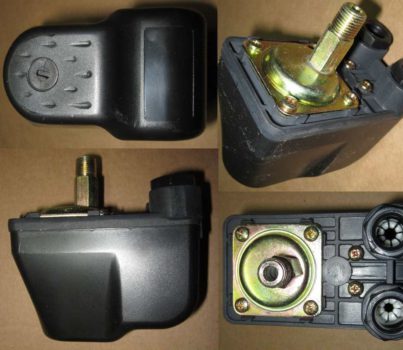
The pump pumps water into the hydraulic tank, the relay membrane presses on the platform, it rises, reaches a large spring, etc. The cycle resumes and is performed automatically.
Using a large spring, a pressure indicator is set at which the pump unit must be turned on, and a small one determines not the “ceiling” of the permissible pressure in the system, as you might think, but the difference between these two indicators. This is an important point that will come in handy when studying the procedure for setting pressure switch own pump.
Is there any need for customization?
Of course, independently or with the help of a specialist, but everyone who assembled their pumping station from separate elements will need to set up a pressure switch.
There is an opinion that ready-made pumping stations, purchased in assembled form, are equipped with a pressure switch that is already configured and prepared for operation. In practice, this is far from always the case.
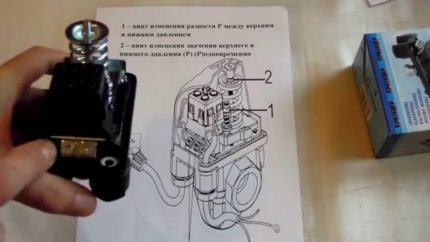
Each water system has individual characteristics. And the needs of the residents of the house can be different.
Constant pressure in the home system, which has only a shower, kitchen sink and bathtub, are significantly different from the needs of a spacious cottage with a jacuzzi and hydromassage.Factory settings do not always correspond to the real state of affairs.
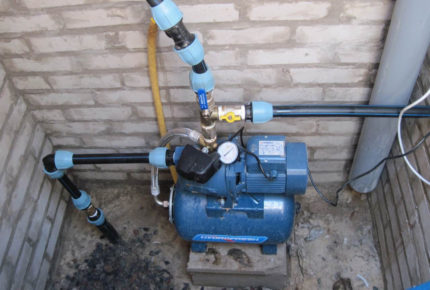
In addition to adjusting the pressure switch when installing the pumping station, you should also periodically check and adjust its operation.
The same operation will have to be repeated if some part of the pumping station is out of order, has been repaired or replaced. The procedure for adjusting equipment is practically no different from the procedure for setting it up.
General terminology of indicators
When configuring the pressure switch, some specific names are used. They are well understood by a specialist, but a beginner can be confused. It is better to immediately understand their essence, so as not to get confused during the performance of work.
These terms are:
- inclusion pressure;
- shutdown pressure;
- pressure drop;
- maximum shutdown pressure.
Off pressure is usually referred to as Poff. Sometimes this indicator is also called upper pressure. This indicator, as the name implies, indicates the pressure at which the pump starts or resumes operation, and water begins to pump into the hydraulic tank. Typically, the manufacturer defaults to a lower pressure of 1.5 bar.
Turn-on pressure, by analogy, is also called lower pressure and is designated as Rvcl. This is the second granite indicator, on the relay coming from the factory, usually set to about 3 bar or slightly less.
The differential pressure or delta (ΔP) is calculated as the difference between the lower and upper pressure. In the standard model of a pressure switch, this value is usually around 1.5 bar before adjustment.
The maximum, or rather the maximum allowable, shutdown pressure allows you to get an idea of the maximum pressure in the system. Exceeding this indicator can cause significant harm to water supply and equipment. Typically, this is about 5 bar or slightly less.
Pressure accumulator
Understanding that how is the accumulator, will help to cope better with self-tuning of control equipment.
There are two types of hydraulic tanks: with a rubber insert reminiscent of sadness, or with a rubber membrane. This element divides the container into two non-communicating parts, one of which contains water and the other contains air.
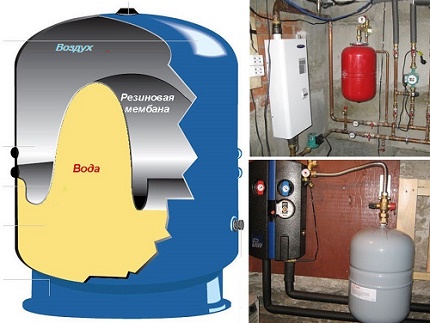
In any case, they work approximately the same. Water enters the tank, and a rubber insert presses on it to allow movement of water through the plumbing system.
Therefore, a certain pressure is always present in the hydraulic tank, which varies markedly depending on the amount of water and air in the tank.
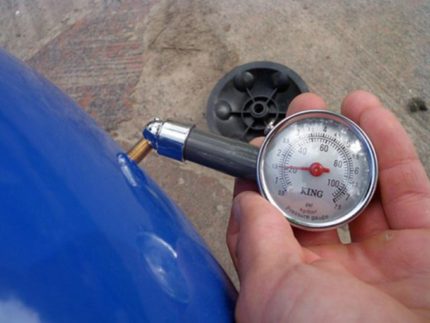
The tank body usually has a car nipple. Through it, air can be pumped into the hydraulic tank or vented to adjust the working pressure inside the tank.
When connecting the pressure switch to the pump, it is recommended to measure the current pressure in the hydraulic tank. The manufacturer defaults to 1.5 bar. But in practice, part of the air usually leaves, and the pressure in the tank will be lower.
To measure the pressure in the accumulator, use a conventional car pressure gauge. It is recommended to choose a model with a scale on which the smallest gradation step is affixed. Such a device will allow for more accurate measurements. It makes no sense to measure pressure if it is not possible to take into account one tenth of a bar.
In this regard, it makes sense to check the pressure gauge with which the pumping station of industrial production is equipped.
Often manufacturers save and install inexpensive models. The accuracy of measurements with such an instrument may be in doubt. It is better to replace it with a more reliable and accurate device.
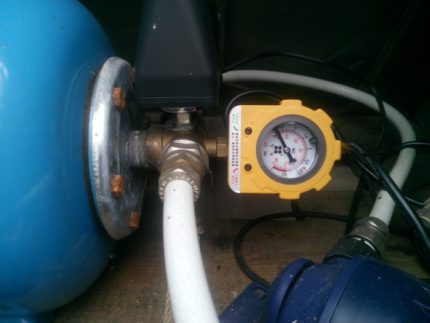
Mechanical automobile pressure gauges do not look very presentable, however, judging by the reviews, they are much better than newfangled electronic devices. If nevertheless the choice is made in favor of an electronic pressure gauge, you should not save. It is better to take a device manufactured by a reliable manufacturer than a cheap plastic craft that does not provide accurate data and can break at any time.
Another important point - the electronic pressure gauge requires power, this will have to be monitored. Checking the pressure in the tank is very simple.
A pressure gauge is attached to the nipple and the readings are measured. Normal pressure is considered in the range from one to one and a half atmospheres. If the pressure in the tank is too high, the water supply in it will be less, but the pressure will be just fine.
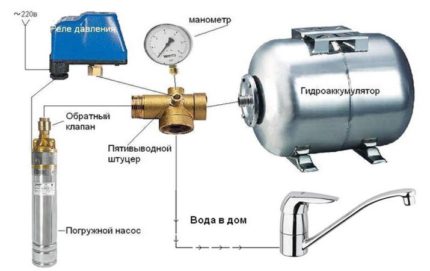
Remember that too high a pressure in the system can be dangerous. In this case, all the components of the water supply system constantly work under increased load, and this leads to rapid wear of the equipment. In addition, in order to maintain increased pressure in the system, it is necessary to pump water into the tank more often, and therefore more often, turn on the pump.
It is also not very useful, as the likelihood of breakdowns increases. When setting up the system you need a certain balance. For example, if pressure in the accumulator too high or excessively low, this can damage the rubber gasket.
How to configure the relay?
There is a cover on the pressure switch housing, and under it are two springs equipped with nuts: large and small. Rotating these springs, set the lower pressure in the accumulator, as well as the difference between the values of the pressure on and off. The lower pressure is regulated by a large spring, and the small pressure is responsible for the difference between the upper and lower pressure.
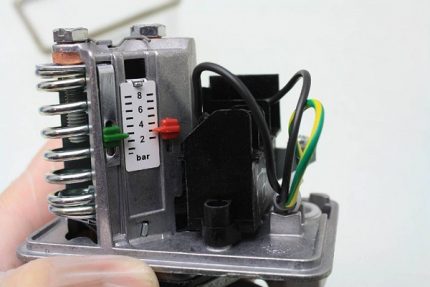
Before starting the setup, it is necessary to study the technical documentation of the pressure switch, as well as the pumping station: hydraulic tank and its other elements.
The documentation indicates the operating and limit indicators for which this equipment is designed. During the adjustment, these indicators should be taken into account so as not to exceed them, otherwise these devices may soon break down.
Sometimes it happens that during the adjustment of the pressure switch, the pressure in the system still reaches the limit values. If this happens, you just need to turn off the pump manually and continue with the setup.Fortunately, such situations are extremely rare, since the capacity of household surface pumps is simply not enough to bring the hydraulic tank or system to the limit.
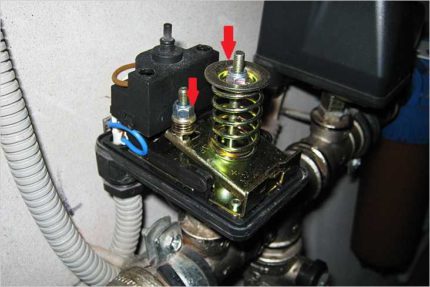
It is useless to set up a relay if the accumulator is filled with water. In this case, not only the water pressure will be taken into account, but also the air pressure in the tank.
To adjust the pressure switch, you must perform the following steps:
- Set the working air pressure in the empty accumulator.
- Turn on the pump.
- Fill the tank with water until a lower pressure is reached.
- Turn off the pump.
- Turn the small nut until the pump starts.
- Wait until the tank is full and the pump shuts off.
- Open water.
- Turn the large spring to set the switching pressure.
- Turn on the pump.
- Fill the tank with water.
- Correct the position of the small adjustment spring.
The direction of rotation of the adjustment springs can be determined by the signs “+” and “-”, which are usually next to each other. To increase the switching pressure, the large spring should be rotated clockwise, and to reduce this figure, it is rotated counterclockwise.
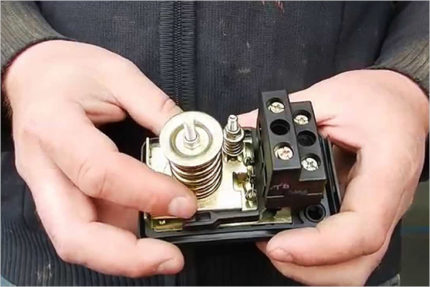
The rotation of the adjustment springs during the adjustment of the pressure switch for the pump must be performed very smoothly, about a quarter or half revolution, these are very sensitive elements. The pressure gauge, when turned on again, should show a lower pressure.
With regard to indicators when adjusting the relay, it will be useful to remember the following points:
- If the hydraulic tank is filled, and the pressure gauge remains unchanged, then the limit pressure in the tank has been reached, the pump should be immediately turned off.
- If the difference between the values of the pressure off and on is about 1-2 atm., This is considered normal.
- If the difference is more or less, the adjustment should be repeated taking into account possible errors.
- The optimal difference between the set lower pressure and the pressure determined at the very beginning in the empty accumulator is 0.1-0.3 atm.
- In the accumulator, the air pressure should not be less than 0.8 atm.
The system can regularly turn on and off in automatic mode and at other indicators. But these boundaries make it possible to minimize the wear of equipment, for example, the rubber tab of the hydraulic tank, and to extend the operating time of all devices.
Some tips and tricks
For normal functioning pumping station It is recommended to measure the air pressure in the hydraulic accumulator every three months. This measure will help maintain stable equipment settings. A sharp change in indicators may indicate some breakdowns that need to be addressed.
In order to quickly monitor the status of the system, it makes sense just from time to time to record the readings of the water pressure gauge when the pump is turned on and off. If they correspond to the numbers set during the equipment setup, the system operation can be considered normal.
A noticeable difference indicates that you need to check the air pressure in the tank and, possibly, reconfigure the pressure switch. Sometimes you just need to pump a little air into the accumulator, and the indicators will return to normal.
The accuracy of the pressure gauge has a certain error. In part, this can be caused by the friction of its moving parts during measurements. To improve the reading process, it is recommended to lubricate the pressure gauge additionally before starting the measurement.
The pressure switch, like other mechanisms, tends to wear out over time. Initially, you should choose a durable product. An important factor in the continued operation of the pressure switch is the correct settings. Do not use this instrument at the maximum permissible upper pressure values.
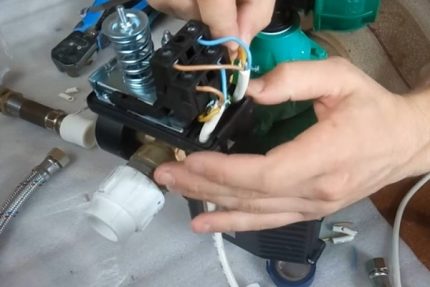
A small margin should be left, then the elements of the device will not wear out so quickly. If it is necessary to set the upper pressure in the system at a sufficiently high level, for example, five atmospheres, it is better to purchase a relay with a maximum permissible work value of six atmospheres. Finding such a model is more difficult, but it is quite possible.
Serious damage to the pressure switch can result from contamination in the water pipes. This is a typical situation for old water pipes made of metal structures.
Before installing the pumping station, it is recommended to thoroughly clean the water supply. A complete replacement of metal pipes with plastic structures, if possible, will not hurt.
When adjusting the relays, the adjustment springs should be treated with extreme care. If they are compressed too much, i.e. twisted during the setup process, when the device is working, errors will very soon become apparent. Damage to the relay in the near future is almost guaranteed.
If during checking the operation of the pumping station there is a gradual increase in the shutdown pressure, this may indicate that the device is clogged. No need to change it immediately.
It is necessary to unscrew the four mounting bolts on the pressure switch housing, remove the membrane assembly and thoroughly flush the inside of the relay, where possible, as well as all the small holes.
Sometimes it’s enough just to remove the relay and clean its holes from the outside without disassembling. It also does not hurt to clean the entire pumping station. If water suddenly begins to flow directly from the relay case, then particles of pollution have pierced the membrane. In this case, the device will have to be completely replaced.
Conclusions and useful video on the topic
An overview of the pressure switch device is presented here:
This video footage details the process of setting up a pressure switch:
Setting up a pressure switch is not always easy. It is necessary to act carefully and carefully. But an understanding of the principles of the device and the features of its settings allows us to cope with this task quite satisfactorily.
We are waiting for your stories about the experience of installing and configuring a pressure switch, operating a pump system equipped with a device. Perhaps you had questions in the process of getting acquainted with the material? Ask them and comment on the article in the block below.

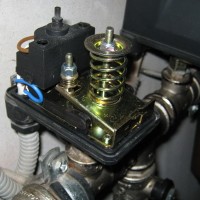 Adjusting the pressure switch for the accumulator: instructing on the equipment setup + expert advice
Adjusting the pressure switch for the accumulator: instructing on the equipment setup + expert advice  Water pressure switch: what it is, how it works + how it is adjusted
Water pressure switch: what it is, how it works + how it is adjusted 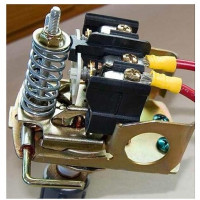 How a pressure switch for a pumping station works + rules and features of its adjustment
How a pressure switch for a pumping station works + rules and features of its adjustment 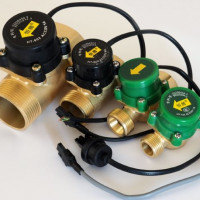 Water flow relay: device, principle of operation + instruction on connection
Water flow relay: device, principle of operation + instruction on connection 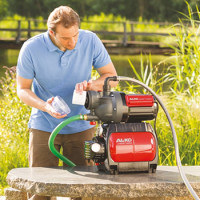 Adjustment of the pumping station: rules and algorithm for setting up the equipment
Adjustment of the pumping station: rules and algorithm for setting up the equipment 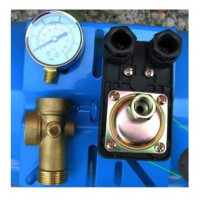 Water pressure sensor in the water supply system: specifics of use and adjustment of the device
Water pressure sensor in the water supply system: specifics of use and adjustment of the device  How much does it cost to connect gas to a private house: the price of organizing gas supply
How much does it cost to connect gas to a private house: the price of organizing gas supply  The best washing machines with dryer: model rating and customer tips
The best washing machines with dryer: model rating and customer tips  What is the color temperature of light and the nuances of choosing the temperature of the lamps to suit your needs
What is the color temperature of light and the nuances of choosing the temperature of the lamps to suit your needs  Replacement of a geyser in an apartment: replacement paperwork + basic norms and requirements
Replacement of a geyser in an apartment: replacement paperwork + basic norms and requirements
In general, I was sure that I did not need to additionally configure the pressure switch, but after reading it I somehow got tired. I had a problem, did not find the technical documentation, so I acted blindly. I was very afraid to exceed the limit values, but everything seemed to work out (eye diamond). I still have a question, why is it necessary to tune it all the same? I did not notice any changes after configuration.
Regarding the adjustment of the pressure switch, this issue has already been considered on the forum and I gave a link to a good video from YouTube in the answers, here - https://engineer.techinfus.com/en/forum/f-voda/nasos/kak-otregulirovat-davlenie-nasosnoy-stantsii.html.
In general, the question is not new, so it makes no sense to paint everything. Setting the pressure switch is not always necessary, but when there are second breaks in the water supply to the water supply system, the pressure switch is controlled first of all, since it is often the reason for the failure in the water supply.
The guys carefully re-read the article, and the rest too, you always confuse the turn-on pressure and the turn-off pressure and, accordingly, the relay settings.
Why is there a pause for a second or two during the exit of water from the tap? Water poured, poured and suddenly disappeared for a second. Then she went again. The pump has started. What to do?
There may be several reasons - casing and pipe leaks, air pressure in the accumulator, clogged filters, decreased well flow rate, and so on. More details are needed to draw any conclusions. At least immediately these jerks begin, or after 10-15 minutes of normal operation, the jet gradually weakens and begins to “spit”.
I set everything up, but now, after power is supplied, the relay turns on and off instantly, and behind it the pump which is in the well. I can not find a reason, what to do?
This means that you made the settings incorrectly and as a result you get a “domino effect” or chain reaction. Turning off one pump will turn off the second, as they are connected in one water supply system. Here it is necessary to understand this: the reason is the incorrect adjustment of the pressure switch or still there are problems in the electrical circuit of the equipment.
Please provide an approximate scheme for connecting the equipment so that I can give specific advice that will help you solve this problem. Need a connection diagram of communications, make and model of pumps, an electrical circuit diagram. Thanks to these data, it will be possible to narrow the list of possible problems to several options. I will wait for an answer from you.